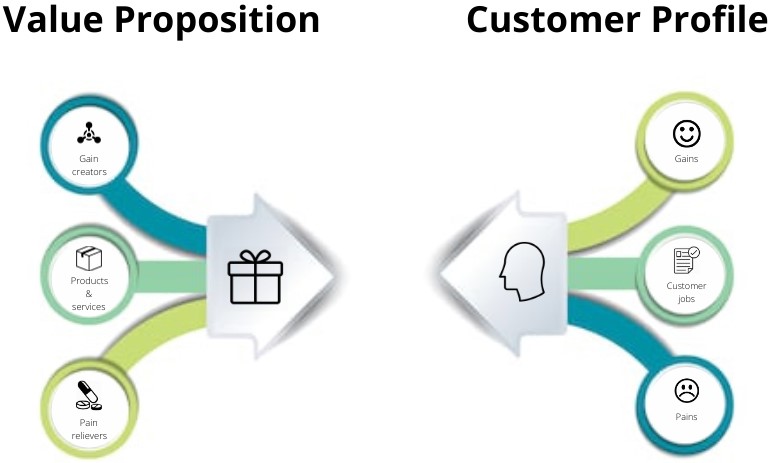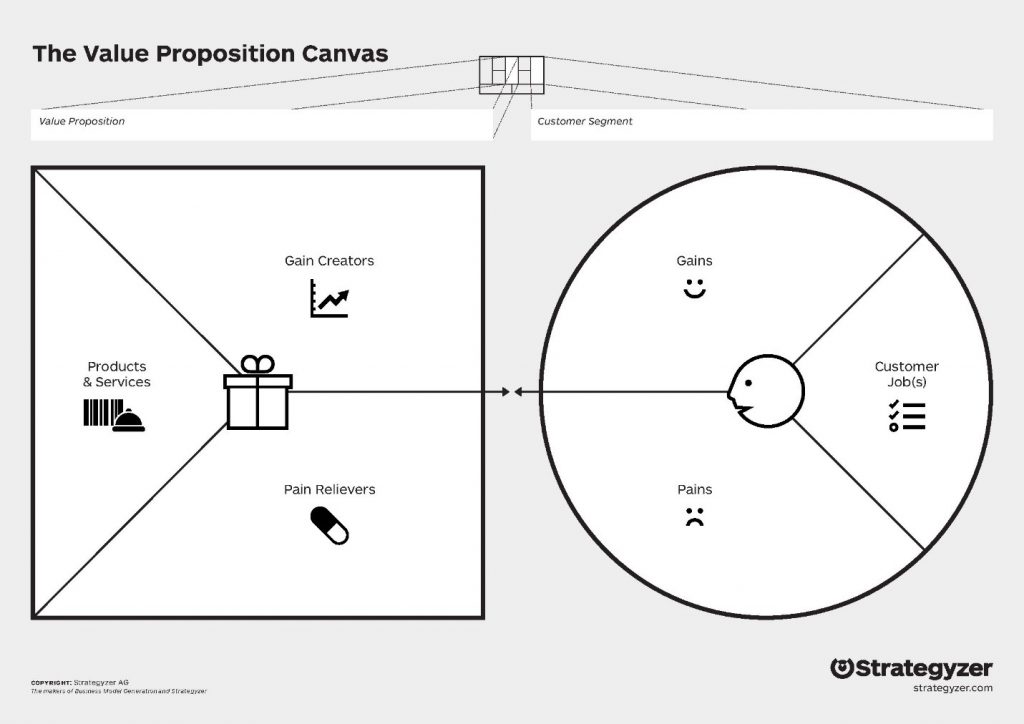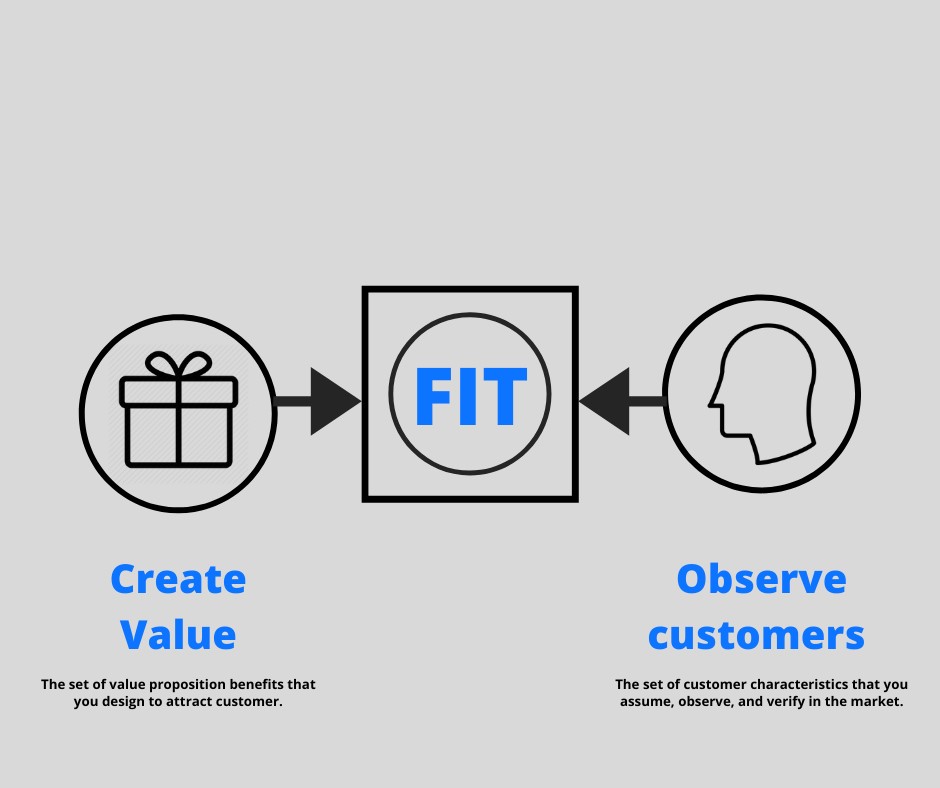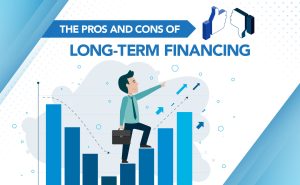The start of a new product means checking its validity. It is also used to establish a focus on meeting customers’ demands. For that, every start-up founder can enjoy the value proposition canvas. We will discuss value proposition canvas example and value proposition canvas template below.
The Value Proposition Canvas is a tool that ensures that a product caters to customer needs.
It is about finding out why the customer needs a supplier and what the customer can perceive as an extra value. It can also find what the customer finds annoying or disadvantageous.
Why was it created
In 2004, Alexander Osterwalder introduced his research on business models. It contained the first sketches of the template of the business model canvas.
The business model canvas is an idea-validating tool for revealing project flaws. But it lacks a detailed customer focus. The Value Proposition Canvas ensures that there is a fit between the product and the market.
It also gives a detailed look at the relationship between two parts of the Business Model Canvas i.e customer profiles and the value propositions.

The Structure and Template of the Value Proposition Canvas

At first glimpse, this tool is a basic paper sheet with a large leftward square and the rightward circle. It is a geometrical collage formed by the customer profile and the value proposition.
Together they impart an understanding of the required features of a product. These features should also meet the requirements of a particular category of users. You get a clear image of what is lacking or what you have enough to accomplish a rewarding outcome.
That is in brief.
Now, let’s have a detailed look at the constituent parts and template of value proposition canvas.
Customer Profile (The Circle)
Here the focus is not on the product. It is only on the end user’s difficulties. In the customer profile, you also attempt to read customers’ thoughts.
Gains
It is the benefits that the customer expects and needs and what would delight customers. It is also things that may increase the likelihood of adopting a value proposition.
The customer may want to save money, time, or effort. They may be seeking a more natural way to do something. It is also essential to find out what the customer likes about your existing solution.
Pains and gains are not polar notions. Gains should also include things that make customers satisfied or even happy. This is in contrast to being a converse of the pains.
E.g., A customer wants new work clothes that are versatile and boost confidence.
Pains
The negative experiences, emotions, and risks that the customer experiences in the process.
There are varied customer difficulties. These may be price, time taken, complexity, or missing functions. It can also be things that make a customer feel bad. There may be risks that the customer fears.
The understanding of negative experience varies by the categories of users. So it is better to cover as many pains as possible for a good value proposition canvas.
E.g., A customer dislikes not being able to return wrong-sized clothes. He or she also hates shipping charges.
Customer jobs
These are the problems the customers are trying to solve and the needs they wish to meet. It is similar to the ‘Jobs To Be Done’ theory. The tasks are:
1. Functional – These are practical considerations. They are mundane and straightforward. Also, they require the sharing and collecting of information.
2. Social – These are the things people do as a part of relationships and society. They are driven by a sense of duty, optimism, fear, or aspiration. These require communication, self-expression, and other added value.
3. Emotional – These come from our likes and dislikes, indulges, and insecurities. These require the supply of relevant information. E.g., A customer wants new work clothes. They should be well-fitted, but not too revealing.
A customer profile is essential for each customer segment. This is because each segment has distinct gains, pains, and jobs.
Value Proposition Canvas Template (The Square)
The focus here is on features, functionality, and benefits it can offer. This not only attracts customers but also meets their requirements.
Gain creators
How the product or service creates customer gains and how it offers added value to the customer. You should try to find solutions based on functional, social, and basic needs. The idea is to offer something new and unique. This makes the customer’s experience not only better but also exciting.
E.g., A clothing store offers clothes that are comfortable and breathable.
Pain relievers
It is a description of exactly how the product or service alleviates customer pains. It is not necessary to give a detailed description of the pain relief.
You should try to provide a better solution than other providers. Seek to minimize negative consequences for customers. It is enough to provide only a simple statement. It will state the facts that end the current frustration with the job.
E.g., A clothing store offers free shipping and accepts returns. This lessens the risk of purchase for the customer.
Products and services
These are the products and services which create gain and relieve pain. They also underpin the creation of value for the customer.
Here you can mention the products and their versions if any. These can be premium, standard, or anything like that. Rank them by customer importance. You can also analyze customer requirements and provide relevant solutions.
Do not fill this field with a list of features your product will have. So, focus on what you can provide to get the consumer tasks done.
E.g., A clothing store offers 100% cotton clothes. It also allows you to see where your clothes were made.
Achieving fit between a good Value Proposition and the Customer Profile

It is important to always test the value proposition together with the customer. This establishes whether the proposition adds value to the customer’s business.
The customer goes through the process step by step. This is to assess whether previous assumptions and interpretations are still correct. It is the customer who determines whether the proposition will produce results.
Example of a good Value Proposition Canvas
Airbnb is one of the great value proposition. Airbnb allows homeowners to provide lodging services to tourists. It has evolved into an experience-driven, mainstream staple.
Airbnb has a premium wing called “Airbnb Plus.” It has a two-in-one value proposition. Travellers enjoy the local experience, and hosts also get some extra income.
There is also a new product feature of “local activities” that one can do in a new city. This is a major unexpected or surprise gain for guests.
Airbnb also introduced the ability to leave reviews and rate hosts and guests. This protects against the problems of guest damages and poor host services. These features have ensured the removal of the pain point of lack of trust.
Thus, Airbnb kept on refining its services based on the Value Proposition Canvas. This has ensured its enduring success.
Mistakes of Value Proposition Canvas
Considering Value Proposition canvas as a single entity
It is a must to view the Canvas as two distinct elements or building blocks. On the right of the canvas (the circle) is the ‘Customer Profile.’ All these things are outside of your direct control.
Likewise, On the left of the canvas (the square) is the ‘Value Map.’ These are the essential things that are within your span of control.
Mixing several customer segments into one canvas
Mixing many segments makes it very difficult to know which segment is being observed. It’s even more difficult first to identify and focus on the highest priority jobs, pains, and gains. Then be able to design a compelling value proposition to address them.
It’s an easy mistake to make and also very easy to correct with many options for improving. Resolve the Client Profile one consumer section at a time
Advantages of a Value Proposition Canvas
Raised customer engagement
It’s a challenge to sell a product if you can’t engage your customers. Mind reading might not be enough to deliver what customers want. In this case, you need a bridge between two aspects. The aspects are understanding the customer’s needs and also providing a satisfactory product.
The value proposition canvas will help you to have an appropriate transition from one to another. Using it, you can define the core factors the audience attaches the most significant value to.
Based on that, you will avoid unnecessary elements like unclaimed features or a bling UI. Your engagement with customers will be as high as possible.
Great for blog writers
Take the time to understand your target audience’s jobs, pains, and gains on your canvas. Then you can craft informative pieces that speak to these in a series of blog posts.
Begin offering answers, ideas, and guidance relevant to their requirements. This will build your authority in their eyes, and you will also become a trusted resource.
Conclusion
Value Proposition Canvas is a great tool to know the consumer’s perspective about your product’s value. From our side, we also suggest you give a shot and experience the canvas in action. It’s most likely that you’ll enjoy its effect and find it useful for future projects.
We at Alcor help founders build their startup from business idea to growth stage. We work with a network of 5K+ investors to secure funding to give them financial wings.
Also explore our free Venture capital Preparedness report to assess your funding feasibility on 40 parameters and gap analysis.









